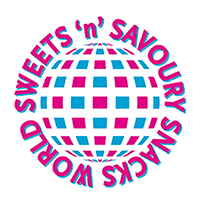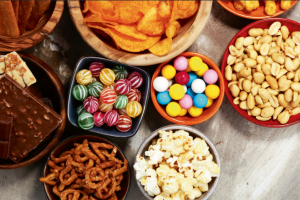The colour purple

In April this year, Cadbury lost its 11-year legal battle with rival Swiss firm, Nestlé, to register Pantone 2685c as a UK trade mark. David Thompson, an intellectual property specialist at law firm Michelmores LLP, considers the implications of the case.
Does Pantone 2685c mean anything to you? It probably doesn’t, but it is something many of us will see on a day-to-day basis. And you may also be seeing a lot more of it in the future.
Pantone 2685c is the iconic purple colour that has adorned Cadbury’s Dairy Milk chocolate bars since the early 20th century. However, in April this year, Cadbury lost its 11-year legal battle with rival Swiss firm, Nestlé, to register Pantone 2685c as a UK trade mark.
The case
The tussle began in 2004, when Cadbury took steps to bolster existing protection around key elements of its brand identity. It chose to submit a new trade mark application to the UK Intellectual Property Office – focussing on the colour of its product packaging. This move was challenged by Nestlé on the basis that the colour was not “capable of being represented graphically,” a key requirement for any UK trade mark.
The UK Intellectual Property Office and the High Court both rejected Nestlé’s assertions. Nestlé persevered and was successful in the Court of Appeal, a decision that was upheld in April 2014 by the UK Supreme Court when it refused to grant Cadbury permission to appeal. This means that Cadbury has exhausted all available avenues of appeal in the UK.
But what does this mean for other manufacturers, distributors and businesses operating in the grocery, bakery, snack and confectionery sectors (as well as for chocolate lovers)?
Trade marks
It should be noted that Cadbury has only been prevented from obtaining registered trade mark rights to the purple colour as defined in this particular trade mark application. A little research reveals that Cadbury does have existing registered trade mark protection covering Pantone 2685c, which was not challenged by Nestlé in these proceedings.
Moreover, between August 2013 and October 2013, Cadbury, evidently undeterred by the ongoing court battle, also filed three new UK trade marks consisting of the purple colour but with varying scopes, ranging from extremely broad (simply the colour itself) to fairly narrow (the colour “applied to the whole visible surface of the packaging of goods”).
These applications are currently pending. This means that those who operate within the bakery, snack and confectionery markets, and potentially the wider grocery sector, should be wary of deciding to rebrand their products using Pantone 2685c as they may still infringe existing registered rights owned by Cadbury.
It is also important to appreciate the reasoning behind the Court of Appeal’s decision, which was upheld by the Supreme Court in its refusal to grant Cadbury permission to appeal.
The decision does not mean that colours, per se, cannot be granted registered trade mark protection. It has been clear since a ruling of the European Court of Justice in 2003 that a particular colour may have the qualities required for trade mark protection in respect of certain goods and services. For example, the following are all registered trade marks:
•the characteristic blue of Tiffany & Co in respect of jewellery, as well as a number of other categories of product ranging from penknives to photo frames and candlesticks to propelling pencils
•the classic green of Harrods in respect of an even larger range of goods, including alcoholic beverages, paper and cardboard goods, coffee and tea, playing cards and many more
•the distinctive lilac of confectionery brand Milka, in respect of different types of chocolate ‘in bar or tablet form.’
A technicality
In this case, Cadbury’s success or failure turned on a technicality. The description of the mark contained in the application was as follows: “The colour purple (Pantone 2685c), as shown on the form of application, applied to the whole visible surface, or being the predominant colour applied to the whole visible surface, of the packaging of the goods.”
It was the use of the word ‘predominantly’ that caused difficulties for Cadbury. It was decided that the attempt to register a sign that ‘predominantly’ contains Pantone 2685c amounted to an application for registration of an unknown multiple of signs containing the colour.
By implication, it referred to other colours and/or materials, which, combined with the purple colour, amounted to a trade mark, but these colours and/or materials were not presented or described in the application. Cadbury may still be able to bolster its protection for the colour, by resorting to a narrower description of its scope in further trade mark applications (hence the new filings referred to previously).
Interestingly, the description of Milka’s registered (and seemingly unchallenged) trade mark consists of very similar wording to that of Cadbury, including those ill-fated words: “… the colour lilac … being the predominant colour applied to the visible surface of the packaging for the goods.”
Finally, last month’s result does not necessarily affect Cadbury’s right to protect the overall ‘get up’ of its products through the law of ‘passing off.’ This may serve as an additional layer of protection. Therefore, if businesses operating in the relevant markets do decide to rebrand to incorporate Pantone 2685c into their products, not only will they risk infringing existing registered trade marks (as noted previously), but if this rebranding is done in such a way that the public is likely to erroneously believe that the products are those of Cadbury (or are otherwise associated or endorsed by Cadbury), they also risk being found guilty of ‘passing off’.
A tough line
The undeniable goodwill that is associated with Cadbury’s purple packaged chocolate bars should allow it to construct a strong case against any third party using copy cat packaging.
It is clear that the courts will take a tough line when dealing with the technical conditions for trade mark registration. Unless you have a substantial legal budget you will want to get it right from the outset and avoid protracted debates on esoteric legal points.
In terms of wider relevance, the decision helps to shine a spotlight on the scope to protect colour based brands. It remains rare for businesses to protect a single shade by way of a trade mark registration. By way of contrast, it is relatively common for marks to rely on strong colour combinations to foster market recognition. Such elements may be readily protectable through trade mark registration. The Cadbury decision, therefore, should not deter businesses from exploring all of the protections that are available to them.



